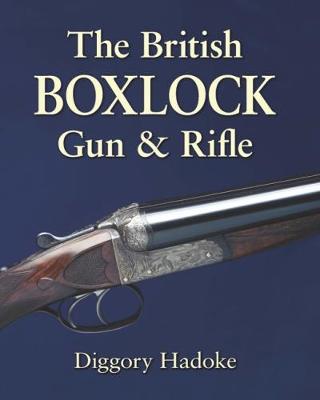Sometimes journeys start in the least of expected Genesis!
About 1987 I did a sporting waterfowl hunt with David A Lindner, where he supplied the guns. Dave was intuitive enough to know I shared a passion for side-by-side shotguns, (and rifles for that matter). That evening remains seared into my memory as if it was yesterday, shooting 12-bore side-by-side hammer shotguns.
It was the first time I recollect ever shooting a hammer gun, and it was both enjoyable and rewarding, with many ducks bagged.
I was in my twenties and impressionable, which in reality probably featured in Dave's plan all along. Either way, I'm grateful for his introduction.
During the acquisition of English shotgun makers for the '52 English shotgun shoot', I had deliberately tried to acquire roughly a third each of hammered, boxlock and sidelock guns. Now three doesn't go into fifty-two exactly, and plans are rarely perfect so I've elected to go for more!
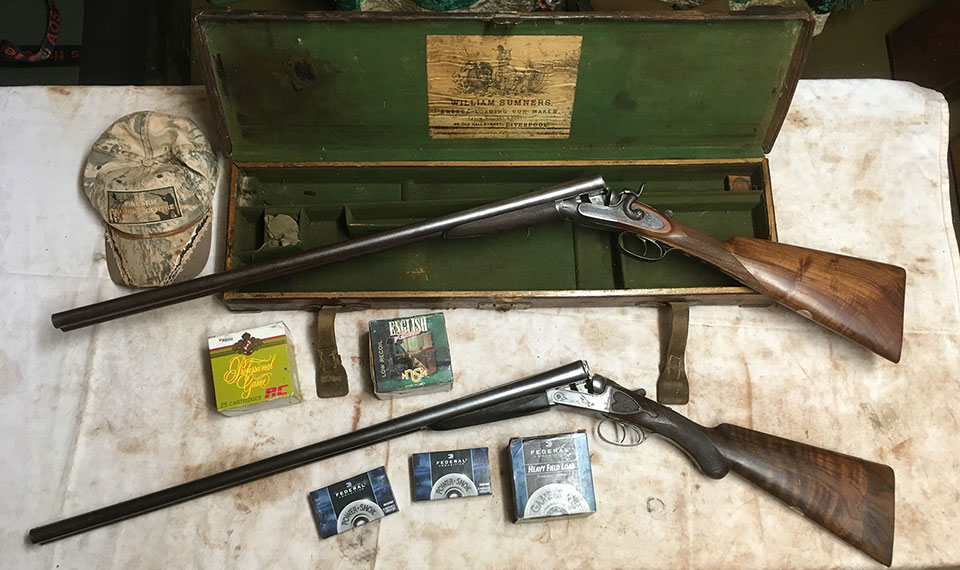
Out of the blue, I received a phone call from Pat at Boronia Firearms about an interesting cased hammered shotgun he'd just recieved, a 'William Sumners'. There was a catch though, it had a badly broken stock that needed replacing and few people today want to invest that sort of money into a 'provincial maker'. However, I saw merit in the project and asked for some photo's, which were emailed through. The metalwork was good so I purchased the gun and had it sent to my stockmaker.
Ken J. Davis of Perth, Western Australia has taken on several projects for me, so I elected to get him to replace butt and forend with good wood, to original dimensions. This was duly completed with nicely figured wood complimenting the makers skills of well over a hundred years ago, probably the 1800's.
Lake Gregory dried-up, killing thousands of waterbirds...
The cased hammer shotgun was received, and put into a lineup of English shotguns to be shot throughout 2019. The restocking was completely to my satisfaction and I'd have no hesitation in recommending Ken's work to anyone requiring restocking services.
Going back through my 'John Rigby' diaries, I note that this hunt took place in November 2019, the harshest dry (after a poor wet season) I've seen in the Kimberleys! Lake Gregory dried-up, killing thousands of waterbirds. Saltwater Crocodiles and Freshwater Crocodiles were both perishing, plus Kangaroo's (Macropods) in their thousands!
The locally called 'Rock Kangaroos' were the most affected. In fifteen years of hunting in the Kimberleys, 2019 fatalities exceeded all the other fourteen years combined.
It is quite apparent to me that 'Rock Kangaroos' (Walleroo's) are very territorial and lack the migrating instinct of Plains Kangaroos, the death toll was heavily as this tendency weighed against them.
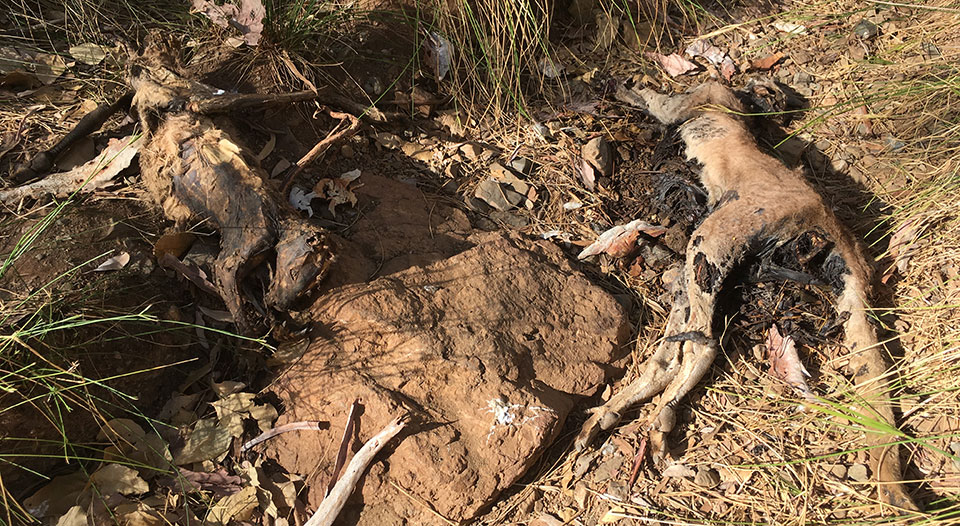
I had sought permission from an olde traditional owner to hunt her community area and received her blessing. The drive in was without misadventure, stopping several times to photograph places of interest for the diary. Upon arriving at the Aboriginal community abandoned long ago, I removed the 'William Sumners' from the gunbag and prepared to walk the local water courses.
I was carrying low pressure light cartridges in keeping with a BP gun of this age, and set off walking the water courses. Very quickly I realised most, if not all the local population of 'Rock Kangaroos' had perished in this region, the smell of death was pervasive.
I took dozens of photo's of this scene, holes dug by the 'Rock Kangaroos' up to a metre deep, and dead 'Rock Kangaroos' laid out like sardines.
The first hunt was northwards and I failed to find water or game, what I did find was chips of Aboriginal worked stone from some artisan perhaps hundreds, if not thousands of years old. I assembled about a dozen flakes from the manufacturing of 'flaking stone tools' and photographed with the 'William Sumners'.
a pair of Dingoes quietly eyeballing me...
After covering several kilometers of dry creek beds I returned to the community and headed southwards, hoping to locate water and some game. I'd hunted about 160 metres southwards when I experienced a premonition of being watched, something I've learned from a young age to listen to! (6th sense?)
I never saw any movement, or heard anything and all I could smell was the stench of death, so I slowly started turning anti-clockwise in observation mode. I'd turned about ninety degrees and there on a spur running off the range was a pair of Dingoes quietly eyeballing me at about 20 metres! In this part of Australia Dingoes get shot and poisoned by the pastoral industry on an industrial scale, as advertised by road signage on both the Duncan and Tanami highways.
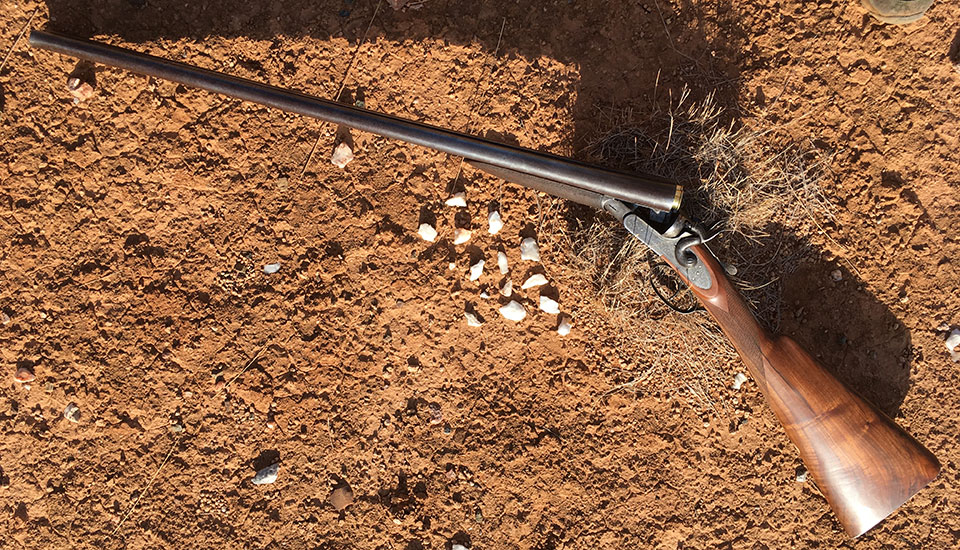
At this point I knew this wasn't normal Dingo behaviour, these Dingo's were hungry and I was fresh meat on the hoof. It was only seconds that we viewed each other, neither panicking or conceding ground, I knew the 'William Sumners' with light birdshot was ineffective.
So without panicking I continued to rotate through another ninety degrees and quietly retraced my steps to the Toyota troopcarrier.
I casually turned my head every 10 meters or so to check behind and never saw either Dingo follow, although every instinct told me they were close by!
I didn't want to speed up as any speed will trigger their predatory instinct to immediately to attack as I'm trying to flee. I held my nerve till I got to the Toyota and opened the door placing the 'William Sumners' onto the front seat. I reached onto the back seat for the 3" chambered 'Bonehill' BLNE and inserted two Federal No.4 buckshot and exited the front seat, turning to face outwards. There, 12 meters away was one of the Dingos, I raised the gun and shot with the right barrel into the shoulder area dropping the howling Dingo.
I quickly scanned for the mate I knew was present somewhere near, but never saw it or movement and elected to put in a finishing shot on the mortally wounded Dingo.
All was quiet again, I reloaded with Federal No.4 buckshot and ranged out about 100 meters north and south of the Toyota without viewing or hearing the other Dingo.
I returned thinking about my childhood reading of Jim Corbett and how several times he'd experienced similar premonitions of danger from leopards and tigers in a bygone era. Did I set out to hunt the area's apex predator? No, but I was prepared and fortunately responded to the challenge rather than reacting and fleeing with potential consequences.
Hunts like this RARELY occur in one's life, and should be cherished as special hunts that simply cannot be planned or artificially orchestrated! I've executed thousands of hunts during the last fifty three years of my life and been trailed by Dingos at least half a dozen times, but this was clearly the most dangerous!
I have no doubt that these Dingos were hunting me, viewing me as meat for their next meal, it's rare that they would close in like this when normally wary of humans. There are no vegetarian Dingos in Australia, they are all carnivores and kill to eat.
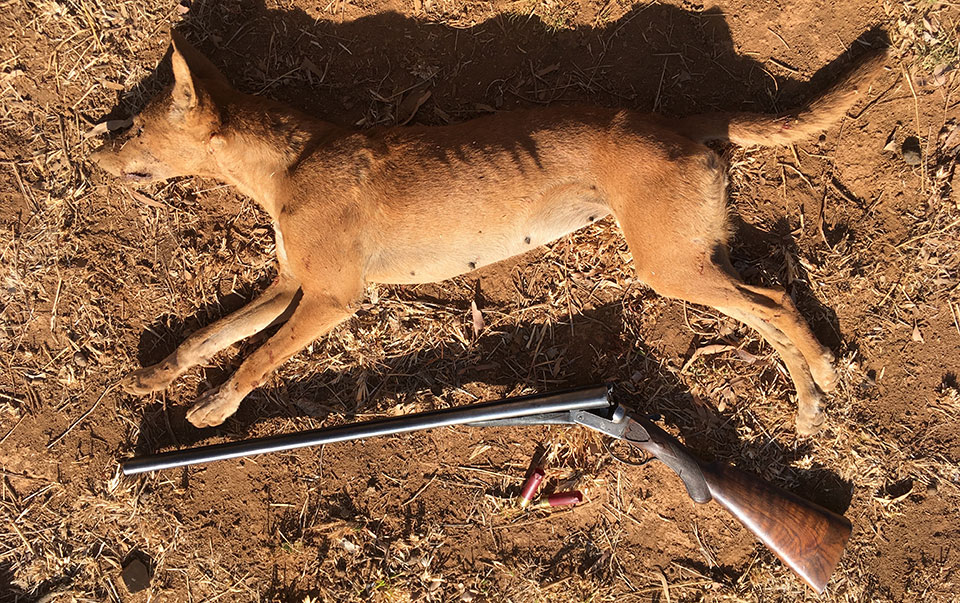
Whilst Dingo was on my target list of game for the '52 English shotgun shoot' I never expected to be blessed with such a dramatic hunt for my records!
Thank you to C.G. Bonehill for producing good guns that are still functioning well into the 21st century. Lastly the 'William Sumners' did get blooded, but later at another spot in this spectacular expedition that is another story.
Published by Vintage Guns Ltd on


